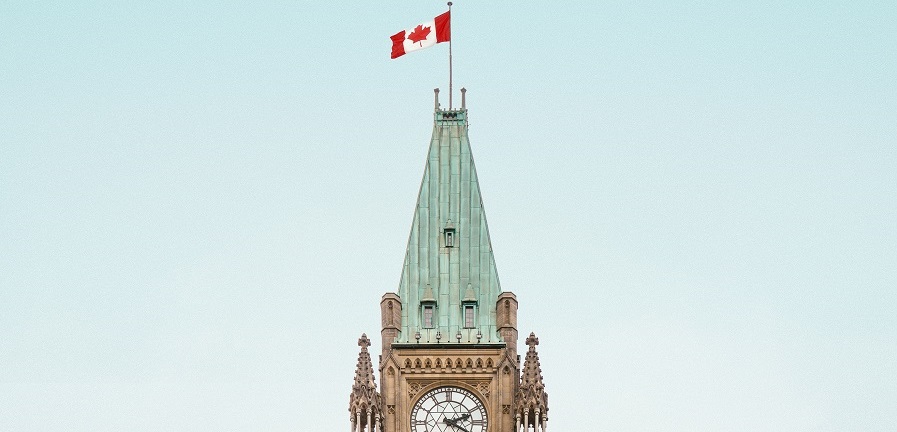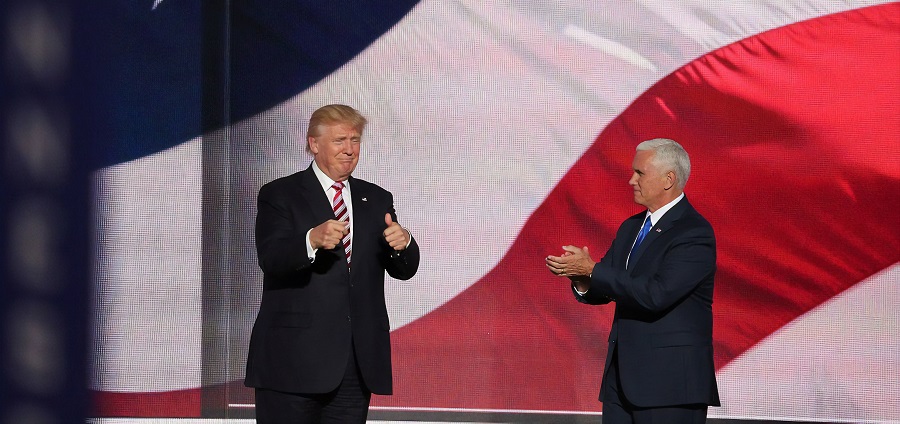Canada Announces New Immigration Pathways for Hong Kong Residents
New Pathways Implemented in Response to Hong Kong Human Rights Concerns
Canada's Immigration Minister Marco Mendicino has announced two new immigration pathways and study/work permits for Hong Kong residents, along with new measures for asylum seekers.
These initiatives will build on the government's recently announced 2021-2023 Immigration Levels Plan while supporting Canada’s commitment to supporting Hong Kong due to human rights concerns.
Going forward, Canada will expedite the processing of work and study permits for eligible Hong Kong youths who wish to work or study in Canada. A new open work permit will also be made available to Hong Kong students who have recently graduated from a post-secondary program. This permit will be valid for up to three years, and holders will be able to use the work experience they have gained to help apply for permanent residence.
Permit holders can also apply for immigration through existing pathways such as the Express Entry system, or one of the two new Hong Kong youth immigration programs.
Eligible spouses, common-law partners, and dependent children can also apply for a study or work permit.
No date has been released for when these permits will begin accepting applications, however, a media release from Immigration, Refugees and Citizenship Canada (IRCC) stated that they are expected to launch soon.
The new immigration pathways, however, are expected to begin accepting applications in 2021.
The first pathway will enable Hong Kong residents who meet the minimum language and education levels and have a minimum of one year of authorized work experience in Canada to apply for permanent residence directly. The second pathway targets international students from Hong Kong who have graduated from a Canadian post-secondary institution.
The pathways were created in direct response to the Chinese government’s national security law in Hong Kong, which was enacted back in June in response to mass protests. This law has been highly criticized for undermining human rights and freedoms, as it criminalizes “secession, subversion, terrorism, and collusion with foreign forces,” and provides very broad definitions for these crimes, which allows the Chinese government to arrest even those who are protesting peacefully.
Measures for Asylum Seekers
In response to the human rights concerns, Hong Kong residents seeking asylum in Canada will be exempt from the 12-month bar on pre-removal risk assessments. Those who have been arrested or convicted for protesting in Hong Kong will also not be deemed inadmissible due to their charge or conviction.
"No foreign national whether from Hong Kong or anywhere else will be disqualified from pursuing a legitimate asylum claim or any other immigration route if they have not committed any crime that would be recognized under Canadian law,” said Mendicino.
Additional Measures for Canadians
For Canadian citizens and permanent residents that are currently in Hong Kong, the processing of any documents that are required to return to Canada will be expedited.
Study Finds Canadians Support Immigration More Than Ever Before
Study Finds Not Even Trump or a Global Pandemic Has Affected Canada's Stance on Immigration
According to a recent study from the Environics Institute, Canadians are more welcoming to newcomers than ever before. This is even despite the uncertainty and economic toll the global pandemic has caused.
The study found that Canadian attitudes towards immigration have been increasingly positive throughout the COVID-19 pandemic, and these views aren’t a coincidence.
“These views are not a blip. They’re not chance. They seem to be deeply rooted and widely spread,” said Andrew Parkin, executive director at Environics.
The study went on to say that not even the emergence of anti-immigration views following the election of U.S. President Donald Trump were able to change Canadians' opinions on immigration.
“If these views are not going to get knocked back by politics in the United States or a major health or an economic crisis, they’re probably not going to get knocked back,” he said.
The Environics study was based on results from a survey titled the Focus Canada survey, which has been conducted every year since 1976.
The 2020 results, which were just released in October, suggested that for the first time in the survey's history, Canadians are less likely to believe that immigrants are not integrating into Canadian society or adopting Canadian values.
Furthermore, the study found that a significant number of Canadians believe that immigrants are critical to the Canadian economy and that Canada needs more immigrants to increase its population and help fill jobs.
“Over the past year, the Canadian public has become more accepting and supportive of immigrants and refugees, continuing a trend dating back several years, but to levels not recorded in more than four decades of Focus Canada surveys,” the report claims.
What's interesting is that these results aren't just coming from young Canadians in heavily populated, diverse cities like Toronto and Vancouver. The study reported that older, more conservative Canadians and residents of regions that have faced economic devastation were becoming more accepting and adopting the same pro-immigration beliefs.
At the same time though, one alarming part of the study found that close to one-third of Canadians feel there are too many refugee claimants that are not “real” refugees. However, this number has decreased dramatically since 1987, when 79% of Canadians held this opinion.
This, along with Canada's overwhelmingly positive opinions on immigration help demonstrate that our country is moving in the right direction by welcoming more newcomers with open arms.
Government Announces Immigration Will Help Support Canada's COVID-19 Economic Recovery
Minister's Immigration Levels Plan Increases Immigration Targets to Help the Economy
Canada's Immigration Minister Marco Mendicino has announced the details of Canada's 2021‒2023 Immigration Levels Plan, which includes increasing immigration targets to help the Canadian economy recover from COVID-19 and drive future growth and job creation.
“Immigration is essential to getting us through the pandemic, but also to our short-term economic recovery and our long-term economic growth," said Mendicino.
The multi-year plan re-enforces the importance of family reunification and refugee settlement, and shines a light on the importance of immigration when it comes to boosting the economy post-pandemic, particularly in the healthcare, information technology, farming, and food production sectors.
The following points are some of the main highlights of the plan:
-
Increasing immigration admissions over the next 3 years to make up the immigration shortfall experienced in 2020
-
60% of immigration admissions will come from the Economic Class to help drive economic growth
-
Focus on innovative and community-driven approaches to help address Canada’s diverse labour and demographic needs
-
Committing to capacity-building and digital transformation in Canada’s immigration system to help mitigate the impact that COVID-19 has had on the processing of applications
-
Assigning additional points for French-speaking candidates under Express Entry to help grow Francophone communities outside of Quebec
-
Admitting up to 500 refugees over the next 2 years through the Economic Mobility Pathways Project
-
Creating a pathway to permanent residency for eligible asylum claimants that have been pandemic front-line workers in the healthcare field between March 13 and August 14, 2020
Although Immigration, Refugees and Citizenship Canada (IRCC) continued to accept and process applications throughout the pandemic, immigration targets in Canada have been severely affected this past year due to the COVID-19 travel restrictions.
The Immigration Levels Plan aims to compensate for this shortfall by helping to fill labour market gaps and welcoming immigrants at a rate of about 1% of the population of Canada. This includes welcoming 401,000 new permanent residents in 2021, 411,000 in 2022, and 421,000 in 2023. Canada's previous Immigration Levels Plan set targets of 351,000 in 2021 and 361,000 in 2022.
"Canadians have seen how newcomers are playing an outsized role in our hospitals and care homes, and helping us to keep food on the table," said Mendicino. "As we look to recovery, newcomers create jobs not just by giving our businesses the skills they need to thrive, but also by starting businesses themselves. Our plan will help to address some of our most acute labour shortages and to grow our population to keep Canada competitive on the world stage.”
Federal Court of Appeal Overturns Suspension of Safe Third Country Agreement
STCA to Remain in Place Pending Appeal from the Federal Government
The Federal Court of Appeal has temporarily suspended the Federal Court’s July ruling which struck down a section of the Safe Third Country Agreement (STCA) between Canada and the United States.
On October 23, the federal government argued that Canada would face an “influx of refugee claimants” without the STCA in place. The Federal Court of Appeal decided in the government’s favour and suspended the lower court’s ruling.
By suspending the Federal Court's decision to invalidate part of the agreement, the STCA will continue to be upheld as normal, and asylum seekers arriving from the U.S will be forced to return.
“The motion is granted. The judgment of the Federal Court is stayed until final determination of the appeal,” wrote Federal Court of Appeal Justice David Stratas.
The STCA gives Canada and the U.S. shared responsibility for refugees in a way that complies with the Refugee Convention. It also deems refugees who enter Canada from the U.S ineligible to make a refugee claim in Canada, unless they have close family members in Canada and meet certain exceptions.
Why the STCA Was Previously Deemed Unconstitutional
In a decision issued on July 22, Federal Court Justice Ann McDonald found that the STCA deprives asylum seekers of their fundamental rights of liberty and security of the person, and is therefore unconstitutional.
In her decision, Justice McDonald also stated that when Canadian immigration and border officials send refugees back to the U.S, they are complicit in the mistreatment U.S. officials carry out against refugees, such as prolonged arbitrary detention and solitary confinement.
“It is my conclusion, based upon the evidence, that ineligible (refugee) claimants are returned to the U.S. by Canadian officials where they are immediately and automatically imprisoned,” said Justice McDonald.
Following the ruling, McDonald stated that the government should expect the agreement to be officially overturned in January 2021, as it would not be in the public's best interest to immediately put an end to the STCA.
The federal government subsequently filed to appeal the decision and requested that the decision be suspended pending a decision on the appeal. Their reasoning was that overturning the STCA would cause “irreparable harm” to the rule of law and the public good, causing an “influx” of asylum seekers and making it difficult to maintain Canada's refugee system.
What Happens Now
The Federal Court of Appeal’s ruling does not mean that the Federal Court’s decision that the STCA is unconstitutional has been overturned.
The Federal Court of Appeal’s decision simply allows the STCA to remain in place until the Court renders a decision on the appeal. The appeal is expected to be heard in February or March of 2021.
Report Finds That Trump’s Immigration Ban May Have Cost U.S Economy $100 Billion
Research Reveals Severe Economic Impact of Restricting Immigration
A recent study suggests that an Executive Order restricting employment immigration issued by U.S. president Donald Trump has had a costly impact on the country's economy, potentially resulting in a $100 billion loss.
The study was conducted by Brookings Institution. The authors estimate that the Executive Order signed on June 22 has resulted in 200,000 fewer foreign workers and their dependents being able to enter the U.S. in 2020.
The Executive Order was issued at the peak of the COVID-19 pandemic, and limited the number of employment-based visas that the U.S. would issue for the remainder of the year.
The employment-based visas that were limited under this order fall under the H-1B, H-2B, J, and L categories.
The Trump administration, however, defended the move, stating that the goal was to protect American workers during the pandemic.
"I have determined that the entry, through December 31, 2020, of certain aliens as immigrants and non-immigrants would be detrimental to the interests of the United States," Trump proclaimed.
Brookings also compared the valuations of Fortune 500 companies that rely on skilled foreign workers before and after the Executive Order was signed, an analysis that showed a 0.45 percent decline in the companies' market valuation, representing a $100 billion loss.
It's difficult to say whether there is a direct correlation between the Executive Order’s immigration restrictions and the drop in market valuation, however, as the U.S economy has been volatile throughout the COVID-19 pandemic.
Nevertheless, according to Brookings, "[t]here is overwhelming evidence documenting that skilled immigration improves firm outcomes such as profits, productivity, production expansion, innovation, and investment."
"It is plausible that the Trump administration’s measures significantly restraining immigration will have lasting negative impacts on American firms, and with it, slow down the post-COVID-19 economic recovery," the report added.
Brookings summarized its report by stating that the findings are indicative that policies restricting immigration, including refugees, students, and skilled workers, are harmful to the U.S and "are the opposite of what is needed to achieve a full economic recovery in the aftermath of the global pandemic."
"We hope our study can inform the policy debate on the importance of designing policies that allow the U.S. economy to continue to grow by complementing American workers with talent from abroad, a formula that has always been an engine of growth for the economy."





